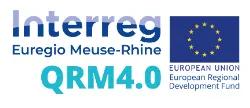Currently, industry is clearly going through a period of adaptation. Just imagine if your business was capable of reducing its lead times by 90%. What advantages would this offer your clients, your staff, your company and your energy consumption? How can you guide your teams to turn this dream into reality?
Lead time from order to product delivery is equivalent to the sum of all processing and waiting time between the successive phases of the production process in question. In practice, waiting time can regularly represent over 95% of total lead time. Reducing lead times therefore equates to reducing waiting time between process phases. By focusing on direct costs, a number of companies have concentrated on improving the active phases that comprise their process, whilst neglecting these intermittent downtimes. And whilst the advantages of reducing direct operating costs are obvious, those inherent to shortening lead times are considered less often.
The advantages inherent to reduced lead times
These appreciable advantages can be classified into three categories:
1. Impact on turnover and profit
Shorter lead times in the development process of new products/services allow for a faster time to market. The time saved offers a two-fold advantage: profit margins are higher at the start of the life cycle and winning a market share is easier because competition remains limited.
The capacity to provide a quote within 24 hours, then to rapidly supply a client, despite a complex and unsettled environment, can but promote your business’s growth.
2. Reduced overhead costs and energy consumption
Long lead time leads to waste of a number of resources that we often tend to neglect.
The first source of waste lies in the complexity of the planning process. Consider the time devoted by your teams to meeting, exchanging e-mails and making telephone calls to solve problems, to draft forecasts and to frequently update them.
Further waste involves the time spent prioritising an urgent order, hence disturbing the flow of all other ongoing orders. This translates as a need for extra storage space for work in progress which has been temporarily stopped, involving the need for lighting, heating and cooling for longer periods, together with additional search and handling time.
When your clients request shorter delivery times than your lead time, the preferred solution is often to supply these clients from stock. So, production on a make-to-stock basis, and the resulting occupation of storage space, constitutes additional waste. Stock management involves a host of hidden costs. Over and above requiring working capital, stagnant stock also increases warehousing costs. Stocks that lie around in warehouses, get old, damaged, lost and become unfit for sale. Energy is wasted in heating, cooling and lighting storage areas and in producing parts that end up of no use. The cost of stagnant stocks is generally underestimated, yet it usually falls in the range of 15 to 25% of the stock value.
Two last examples of waste are, on the one hand, due to late detection of quality issues and, on the other hand, long lead time offering the client sufficient leeway to change their mind, even if purchasing requests and production processes are long-since underway. In both cases, the result is overconsumption in materials, energy and available resources to produce potentially defective parts or that no longer satisfy the client’s needs, together with increased rework or repair costs.
3. Increased employee satisfaction
Companies with short lead times stand out from the crowd thanks to the calm atmosphere that reigns in their workshops and offices. No more stress or agitation to achieve their forecasted results. They no longer need to reassure any disgruntled clients, which results in considerable time saved.
Generally, the companies that have succeeded in reducing their lead time have done so by implementing an organisational structure that breaks down silos between departments and offers increased team independence within a given perimeter. This improves relationships between colleagues and understanding of client needs.
When and how to start the path towards reduced lead time with your teams
When I prepare to travel to a region I’m not familiar with, I check out the local landmarks, accommodation sites, catering facilities and means of transport before I leave. The Quick Response Manufacturing approach is the region we advise you visit if your dream is to reduce your lead time by 90%. We are offering you precisely that opportunity on the occasion of two bootcamps: the first, 'Bootcamp - Experience lead time reduction with QRM4.0' will take place on 7 December, the second QRM bootcamp, will be on 13 December 2022: to register to attend this second bootcamp, please consult the Technifuture website which, just like Sirris, is one of the Interreg QRM4.0 Project partners. Both one-day events are free of charge, thanks to support from the Interreg Euregio Meuse-Rhin QRM4.0 project programme.






